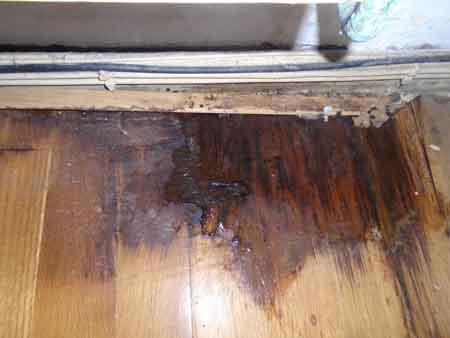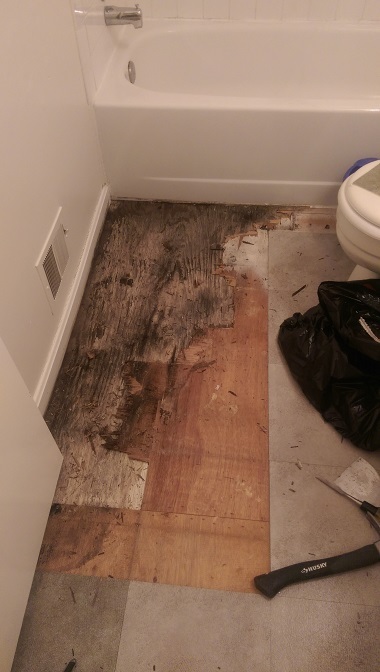Information
Are you currently on the lookout for insight on Top leak detection hacks?

Climate modification as well as international warming have made their mark not simply on nations but also neighborhoods. The as soon as safe areas have actually experienced extra flooding and also groundwater intrusion contrasted to current years. For several homeowners, groundwater breach is already a headache as it breaks through the surface.
Recognizing the indications is always a key for prevention and also mitigating water damages and groundwater intrusion. Groundwater invasion is one of the worst damages to your residence.
Climbing groundwater is a relentless problem due to the fact that it triggers mold and mildew as well as mildew development. It likewise adds to timber rot, which even more causes structural problems. Additionally, a raised amount of groundwater makes your residence much more susceptible to flooding. You can still avoid groundwater from harming your cherished house. Here's just how!
Water-proof your Cellar
Water-proof your basement currently and don't wait prior to it's far too late. If you're in a location vulnerable to flooding, this step should be a need to specifically. Waterproofing ought to be done prior to the view of a flood shows up. The groundwater can break in with rain and also flood if you do not hurry.
To water-proof your cellar, fill the cellar with even more concrete to avoid any kind of groundwater problems. You require to prep the area as well as get rid of all the items kept because room. This activity must be a top priority and is the most effective long-term service to the issue. Mounting concrete and also applying waterproofing steps seals your cellar and also protects it from water intrusion.
Consider Setting Up a French Drainpipe System
A French drainpipe system features polypropylene tubes. This sort of drain system aids as a channel, which is lined with concrete. Further, they do not look recognizable to a complete stranger's eye since these drains pipes resemble a pipeline or trench that assimilates their atmosphere. The advantage of this system is it safeguards your house from additional problems as it avoids the water from leaking into your foundation.
Even more, this system stops your floors from water flooding. Installing this system protects your structure. You will not need to fear crucial fixings associated with m water damages. In addition to that, the system is really simple to set up - you easily change this type and fit of system anytime.
Buy A Number Of Sump Pumps
The pump's main goal is redirecting the water from inflowing your home. This device can shield your home from climbing groundwater. A sump pump will certainly offer a layer of protection if you feel nervous concerning groundwater seeping into your cellar.
Mount these pumps (and numerous of them) in your cellar or crawlspace. When installing, make sure that the tubing is placed into a drain or out onto the street.
Increase the Building Permanently
Raising the foundations of your residence completely is a effective as well as long-time solution to quit incoming groundwater. However it is one of the most pricey alternative. The general procedure entails creating a new, higher foundation to raise the house above the disaster area. This action will certainly additionally increase your house's building value and help in offering your house ultimately.
Applying these tips will help protect your residence as well as properties against water damage. If you tried all of these pointers and also still obtained water damages, it's finest to call in the experts. Call a water restoration firm right away to assist you return on track.
The once secure locations have experienced more flooding and also groundwater breach compared to recent years. Recognizing the indicators is always a secret for avoidance as well as mitigating water damage and also groundwater invasion. Groundwater intrusion is one of the worst problems to your home. To avoid groundwater instruction, normal assessment of leaks in your residence and also inspect if your basement is damp. To water resistant your basement, fill up the basement with even more concrete to prevent any kind of groundwater problems.
Tips for removing water and drying your hardwood flooring after a flood
Water and wood just don t mix. If you ve been following the aftermath of Hurricane Harvey or Hurricane Irma, this should come as no surprise. When water sits on top of hardwood floors, it can permanently ruin the hardwood as the wood will absorb the water through its pores causing warping and discoloration. So, if you have a flood or water damage (or even just a spill) on your hardwood flooring, you ll want to remove the water and dry your floors as quickly as possible.
What happens when your hardwood absorbs water?
Wood can get wet (or moist) in a number of ways a flood from outside from the rain, leaky pipes (or frozen pipes), ice damming, a toilet overflow, a leaky roof, a hurricane or storm, an appliance breaks or leaks (e.g. dishwasher or washing machine), a fire (with water used to extinguish the fire), water spills/accidents, pet accidents, a high water table in the ground that then forces water into your sub-floor from the ground.
Will my insurance company cover my water damaged flooring?
Whether or not your insurance will be cover the damage depends on your insurance plan and the cause of the damage. Please note that most homeowners (less than 20%) have flood insurance. So, if the damage was from flooding (i.e. it came from outside the house), there s a good chance you aren t covered.
Use a wet vacuum to suck up all the standing water
You want to quickly absorb as much water as you can. Note: you may want to turn to a professional mitigation company as they specialize on water extraction and have the best equipment. If you choose to do this yourself, here s a wet vacuum I d recommend. Note: keep vacuuming even after you ve removed all visible water as there is still water from the invisible pores in the wood. You ll see that that the wet vacuum continues to suction up water for a while.
Clean the surface with a disinfectant
Remember, you need to prevent mold in addition to preserving your hardwood floors. You should use a non sudsy disinfectant (e.g. Mr Clean). Once you ve finished this, use the wet vacuum again to remove any leftover water.
Use a dehumidifier
Place a dehumidifier in the center of room. If you can get more than one, that s even better. Be sure to clear the water every few hours (and make sure the filter is clean as well). Make sure the dehumidifier runs for at least 24 hrs, but you may need to use it for 2 to 3 days or even longer, pending on the severity of the water. In some cases, it s advisable to use a dehumidifier for several weeks.
Supplement with large fans (and air conditioning)
Accelerate the drying process with fans. Point the fans towards the floor. Also, be sure to open the windows around 2 inches for better air circulation/ventilation (and keep the door open). This will allow excess moisture to evaporate and create more cross ventilation. (If it s raining or extremely humid outside, then keep the windows shut and just keep the doors to other rooms open and use a dehumidifier). Put the fans on the highest level (i.e. full blast) and point them towards the floor. If you have some that oscillate, even better.
https://theflooringgirl.com/blog/save-hardwood-floors-water-damage-flood/

Do you really like more info about Top leak detection hacks? Create a remark directly below. We'd be pleased to find out your thoughts about this piece. In hopes that you visit us again in the future. Enjoyed our blog entry? Please share it. Help someone else discover it. Thank you for taking the time to read it.
For fast action, contact!